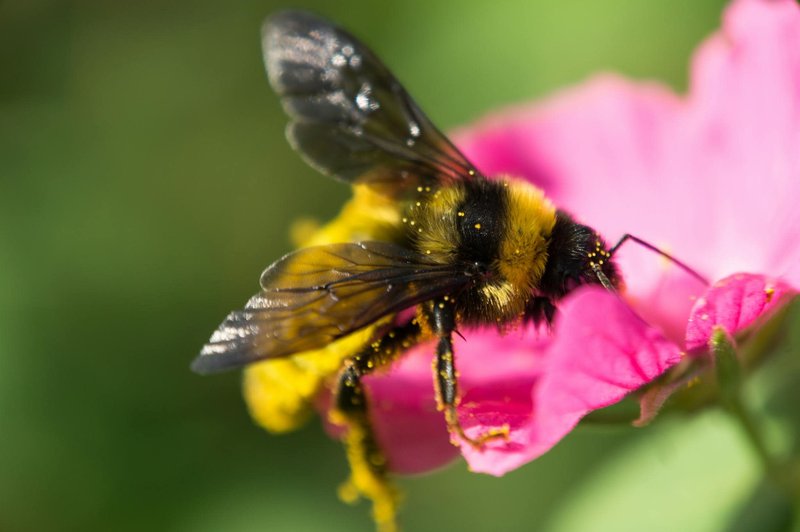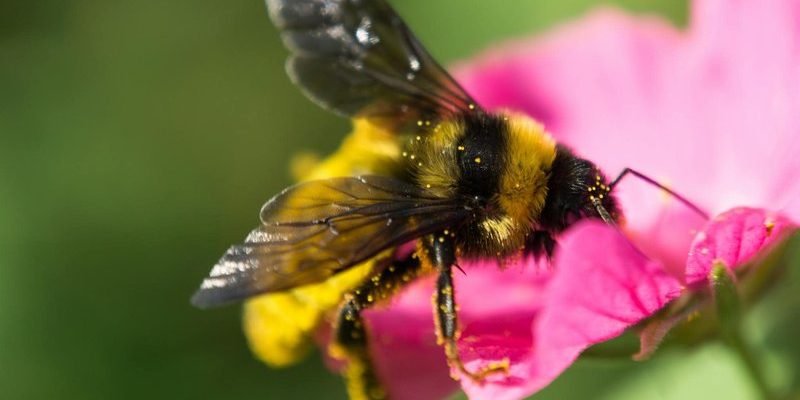
Think of a bumblebee as a little messenger, fluttering from one bloom to another, collecting nectar, and, in the process, spreading life. In many cultures, it represents hard work and community. But it also carries deeper meanings about resurrection, love, and perseverance. Let me explain how this small insect packs such a powerful symbolic punch.
Bumblebees in Folklore and Mythology
Throughout history, bumblebees have danced their way into various folklores and mythologies. For many ancient cultures, these busy little insects were seen as conduits to the divine. For instance, in Greek mythology, bees were linked to the goddess Demeter, the goddess of agriculture, who symbolizes fertility and nourishment. Seeing a bumblebee could be interpreted as a sign of abundance and growth.
In Norse mythology, bees were often associated with the gods. They were thought to carry messages from the gods, buzzing around to share wisdom and inspiration. This connection elevates the bumblebee from a mere insect to a symbol of divine communication—a beautiful reminder that even the smallest creatures can be significant messengers.
Moreover, in Native American cultures, bumblebees symbolize community and cooperation. The way they work together in hives resonates with the values of many indigenous communities, highlighting the importance of collaboration and working towards a common goal. It’s almost poetic when you think about how their social structures reflect human relationships.
The Symbolism of Hard Work and Diligence
You might be wondering why bumblebees are often viewed as symbols of hard work. Anyone who has seen one in action knows they don’t just sit around; they’re constantly buzzing around, collecting nectar and pollinating flowers. This tireless work ethic has made the bumblebee a well-liked symbol for diligence and commitment.
In many cultures, people admire how bumblebees labor, carrying pollen back to their colonies to ensure the survival of their hives. This dedication mirrors the ideals of hard work in human society, encouraging us to persevere in our endeavors. When we see a bumblebee, it can serve as a gentle nudge to keep pushing through our own challenges, reminding us that dedication often leads to sweet rewards.
Think about it: when you’re feeling unmotivated or overwhelmed, just picturing a busy bumblebee can inspire you to get back to work. It’s a small but mighty reminder to stay focused and committed.
Bumblebees as Symbols of Resurrection and Transformation
In various cultures, bumblebees also represent resurrection and transformation. This symbolism often comes from their life cycle, particularly their ability to emerge from winter hibernation. Much like springtime blooming after a long, bleak winter, bumblebees illustrate renewal and the promise of new beginnings.
In Christianity, the bumblebee sometimes symbolizes the resurrection of Christ. Just as the bee emerges from dormancy, believers are reminded of the hope and renewal that comes with faith. This transformative journey is reflected in personal growth, as people undergo their own changes and challenges throughout life.
Similarly, in some Eastern philosophies, bumblebees signify enlightenment. The process of striving and evolving, akin to a bumblebee’s journey, serves as a metaphor for personal development and enlightenment. Watching a bumblebee can remind us how joyful and transformative life can be—with patience and effort, we too can grow and bloom beautifully.
Cultural Representations: Art and Literature
Bumblebees frequently appear in art and literature, often symbolizing notions of love, community, and nature. You might have stumbled upon classic paintings where bumblebees drift among vibrant flowers, capturing the essence of nature’s beauty. Artists have used these charming insects to evoke feelings of tranquility and the simple joy of life.
In literature, bumblebees often act as metaphors for relationships and emotions. For example, in poetry, they can symbolize the delicate balance of love—the way a bee must work hard to gather nectar mirrors the effort required to nurture a relationship. Similarly, bees communicate and work together, mirroring how we connect with others in our lives, which adds layers of meaning to human interactions.
These cultural representations help solidify the bumblebee’s status as a symbol of interconnectedness and the beauty found in relationships, encouraging us to appreciate the bonds we share with others.
The Bumblebee in Pop Culture
In modern pop culture, bumblebees continue to buzz their way into our hearts. From animated films to fashion statements, these insects represent not only nature but also friendship and adventure. Think about beloved characters like Winnie the Pooh, who cherishes the sweet nectar that bees provide. This connection to beloved stories keeps the symbolism of bumblebees alive in contemporary culture.
Bumblebees have also inspired fashion trends, often appearing on clothing and accessories. This affinity for bumblebee imagery highlights their charm and significance, making them a symbol of positivity and friendship. Wearing or displaying bumblebee motifs often conveys a message of community, collaboration, and the importance of working together.
Their presence in pop culture serves as a gentle reminder of the values they symbolize—connection, friendship, and the rewards of hard work.
The Ecological Importance of Bumblebees
Beyond their cultural symbolism, bumblebees play a vital role in our ecosystems. They are essential pollinators, helping plants reproduce and thrive. This ecological contribution is crucial for food production, directly affecting agriculture and our daily lives. Without their hard work, countless plants, including many fruits and vegetables, would struggle to survive.
You might be surprised to learn that bumblebees are particularly good at pollinating certain crops. Tomatoes, for example, benefit from their unique buzzing technique, called “buzz pollination,” which effectively releases pollen. This means that when you enjoy a delicious tomato, you have these little creatures to thank for their labor.
Understanding their ecological role makes it clear that protecting bumblebee populations is essential for maintaining our environment and food sources. By appreciating the bumblebee’s cultural significance, we can also raise awareness about their importance in our ecosystems.
Protecting Bumblebee Populations
Sadly, bumblebee populations are declining due to habitat loss, pesticides, and climate change. This decline poses a serious threat to our ecosystems and food supply. Fortunately, there are steps we can take to help protect these valuable creatures.
Planting native flowers in your garden can provide much-needed food sources for bumblebees. Choose a variety of plants that bloom at different times to ensure a steady supply of nectar throughout the seasons. Additionally, reducing pesticide use and creating bee-friendly habitats can have a significant positive impact.
Supporting local conservation efforts can also help protect bumblebee populations. Many organizations work tirelessly to raise awareness and implement strategies to conserve these essential pollinators. Joining these efforts can make a real difference in preserving the cultural significance and ecological role of bumblebees.
In conclusion, the bumblebee is more than just a pollinator; it’s a rich cultural symbol that embodies hard work, community, transformation, and ecological importance. By understanding the multifaceted meanings behind these incredible creatures, we gain a deeper appreciation for them and their vital role in our world. Whether through folklore, art, or modern pop culture, bumblebees continue to inspire and connect us, reminding us of the beauty, resilience, and sweetness of life.

